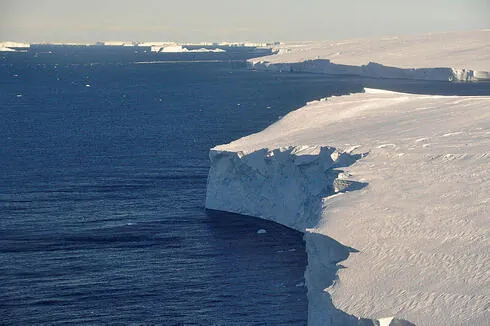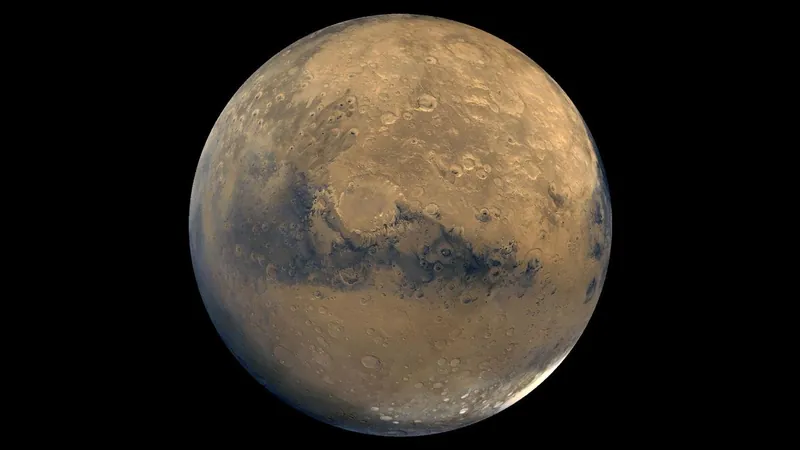
Will Glacial Engineering Save the 'Doomsday Glacier'?
2024-11-04
Author: Benjamin
Introduction
The West Antarctic ice sheet is currently experiencing a dramatic contraction, with its glaciers retreating and melting at alarming rates as the climate crisis worsens. This process is contributing to a rise in sea levels, which poses a significant threat to populations living in low-lying coastal areas around the globe. Central to this crisis is the Thwaites Glacier, infamously known as the 'Doomsday Glacier.'
Recent Research Findings
Recent research published in the Proceedings of the National Academy of Sciences by teams from the University of California, Irvine, and the University of Waterloo indicates that warming tidal currents are causing Thwaites Glacier to melt at a rate faster than previously anticipated. In contrast, a separate study from Dartmouth College and the University of Edinburgh, published in Science Advances, offers a glimmer of hope: it suggests that the glacier may be more resilient to collapse than current models indicate. This divergence in findings highlights the prevailing uncertainties surrounding the glacier's fate and reinforces the urgency for scientific exploration.
The Size and Impact of Thwaites Glacier
Sized at eight times the area of Israel and exceeding the land area of Florida, Thwaites Glacier is a colossal mass of ice that, if fully melted, could lead to a staggering four-meter rise in global sea levels. Such an occurrence would gravely endanger major coastal cities and small island nations alike, which are already at risk from rising tides.
Current Contribution to Sea Level Rise
Currently, the Thwaites Glacier accounts for approximately 4% of global sea level rise, losing an estimated 50 billion tons of ice each year due to climate change. Predictions indicate that crossing a climatic tipping point—marked by critical increases in atmospheric and ocean temperatures—could trigger the disintegration of the West Antarctic ice sheet, leading to substantial and irreversible shifts in the climate. The concern is that if the rate of melting accelerates as forecasted, the consequences could be catastrophic.
Exploring Glacial Climate Engineering
In light of the potential for rapid sea level rise, some experts are investigating glacial climate engineering—a technological approach aimed at slowing or stopping the retreat of glaciers against a backdrop of rising global temperatures. A report released in July by a group of glaciologists, including researchers from the University of Chicago and the University of Lapland, emphasizes the pressing need for more studies into climate engineering strategies as a response to the swift retreat of glaciers.
Possible Measures for Protection
Among the proposed measures to protect Thwaites Glacier and others in West Antarctica is the idea of deploying massive underwater barriers designed to disrupt warm tidal currents, thus reducing the rate of glacial melt. Climate economist Gernot Wagner from Columbia University's Climate School argues, 'For certain polar tipping points, such as Arctic sea ice and the West Antarctic ice sheet, climate engineering appears to be the only viable approach, focusing on mitigation rather than complete prevention.'
Criticism and Concerns
However, such proposals are not without criticism. Many glaciologists and climate scientists voice skepticism regarding the feasibility of these engineering solutions. They warn that while exploring alternatives is crucial, it should not detract from tackling the root problem: greenhouse gas emissions generated by human activity. Relying heavily on climate engineering could hinder necessary actions to reduce emissions, ultimately delaying the long-term solutions needed to combat climate change.
Conclusion
As we edge closer to critical climatic tipping points, including the potential melting of Thwaites Glacier, many experts believe that climate engineering could act as a significant tool in the climate fight—provided it isn’t assumed to be a cure-all. 'Climate engineering is not the solution to climate change but extends the timeline to tackle the urgent necessity of curtailing greenhouse gas emissions,' Wagner concludes. While scientists explore these concepts, the future of Thwaites Glacier—and the millions of people who could be affected by its fate—hangs in the balance, pointing to an urgent need for action on multiple fronts. Keeping an eye on this evolving situation could determine the trajectory of coastal safety for generations to come.









 Brasil (PT)
Brasil (PT)
 Canada (EN)
Canada (EN)
 Chile (ES)
Chile (ES)
 España (ES)
España (ES)
 France (FR)
France (FR)
 Hong Kong (EN)
Hong Kong (EN)
 Italia (IT)
Italia (IT)
 日本 (JA)
日本 (JA)
 Magyarország (HU)
Magyarország (HU)
 Norge (NO)
Norge (NO)
 Polska (PL)
Polska (PL)
 Schweiz (DE)
Schweiz (DE)
 Singapore (EN)
Singapore (EN)
 Sverige (SV)
Sverige (SV)
 Suomi (FI)
Suomi (FI)
 Türkiye (TR)
Türkiye (TR)